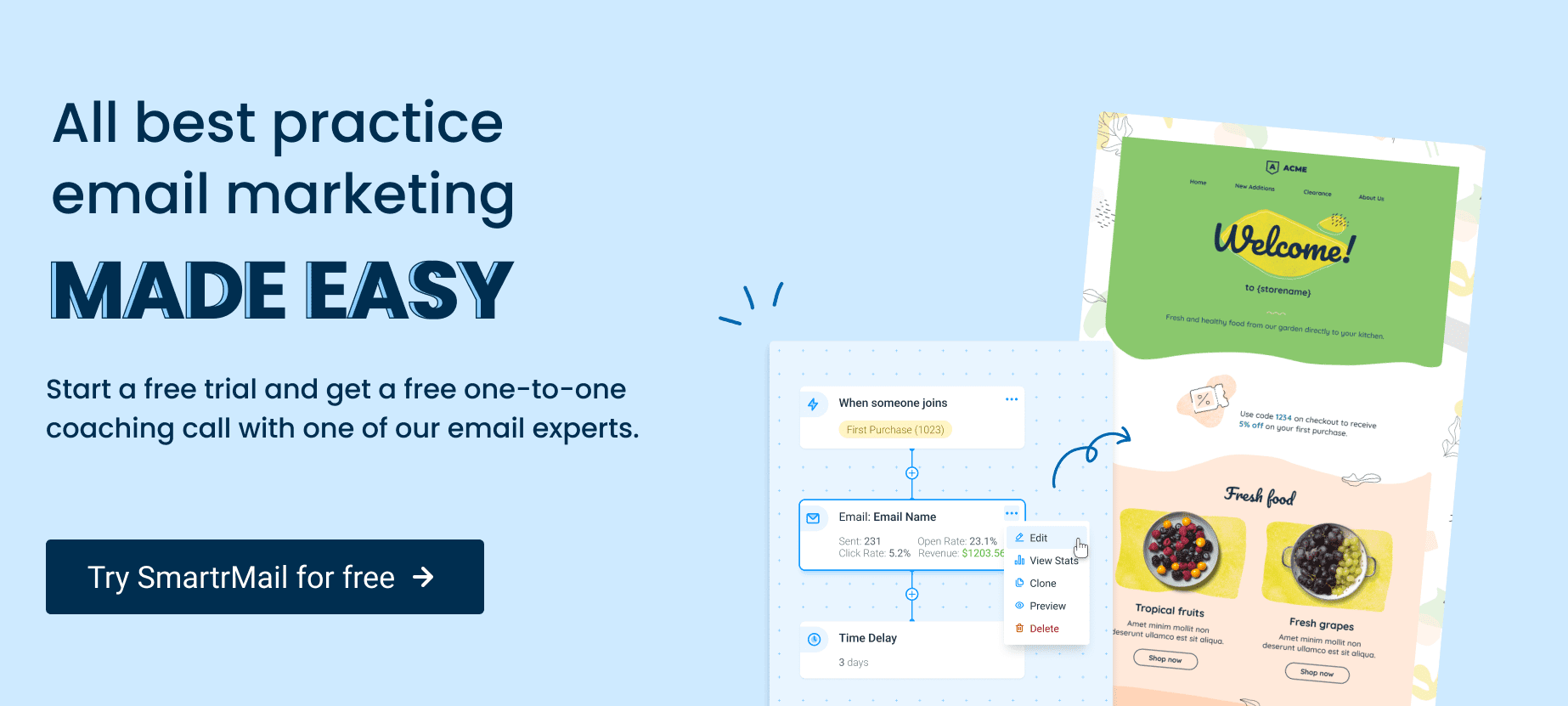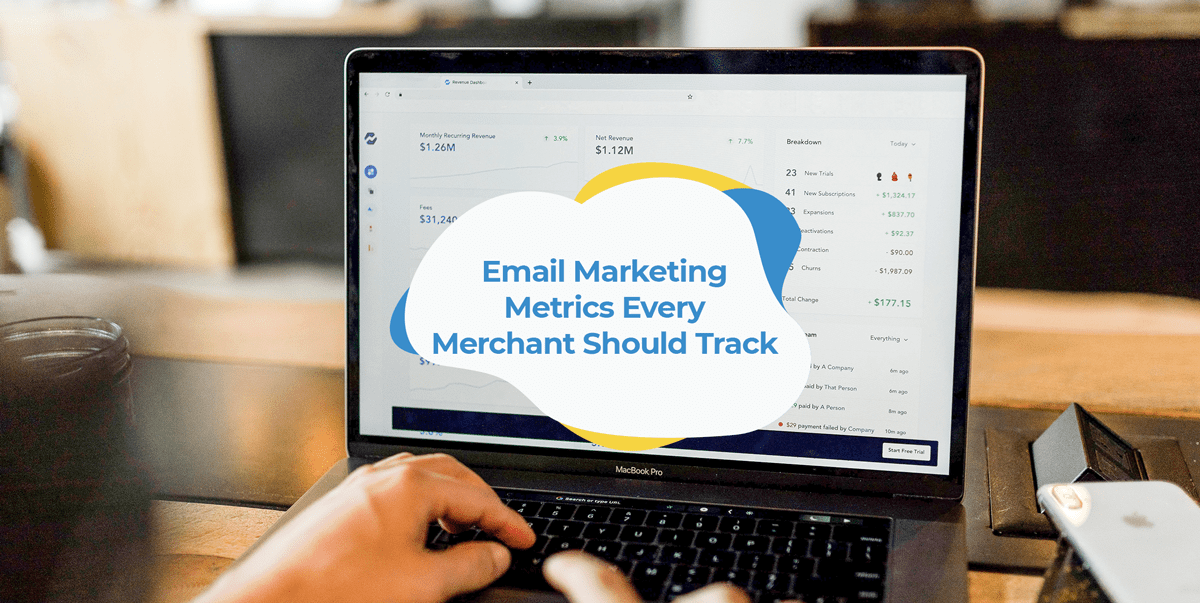Analyzing statistics is, without exaggeration, the most important part of email marketing – this will help you find weak spots in your customer communications and take quick action.
Today we’ll tell you about the eight main email marketing metrics to focus on and give some recommendations on their improvement.
A metric is something you can count, e.g. the number of users, events, or transactions. It’s just a number – how you interpret it is up to you.
Why metrics are so important
You can’t tell for sure if your marketing efforts are effective until you look at the numbers. If sales are up, that’s great! But is it related to your marketing department’s performance, and how does it affect your company’s costs? Metrics can help you spot key growth areas and risk areas. Whether you’re doing your marketing alone or with a mentor, data will be an important consideration when making future decisions. Numbers never lie, and with the right calculations, nothing escapes your eye.
Before we get to formulas, here are three important things to remember:
The more accurate your data, the better decisions you make based on it. Therefore, carefully verify the data you collect, minimizing the human element.
If you’re a novice marketer, use Google Analytics to collect and process online data, create custom reports, and expand your audience.
Once you have a lot of data, sharpen your skills to avoid sampling in Google Analytics.

Email marketing metrics to track
1) Email open rate
Email open rate shows the % of emails opened from the emails delivered, i.e. it shows how many people opened your email list. The higher the open rate, the more subscribers will read your offer. This metric is often related to the subject line of your email and your company’s credibility.
Openings come in the following forms:
- Unique – openings by an individual subscriber;
- Non-unique – all open emails.
Open rate is calculated by the following formula:
(Open rate ÷ (sent emails – bounce emails)) x 100%
A 20% open rate is a good indicator. However, everything depends on the market. Thus, the highly competitive eCommerce market results in low open rates.
The gist of metrics seems simple, however, Open Rate is an ambiguous indicator. Since email clients do not directly inform you about email openings, an invisible image with a unique name is inserted into the HTML code. The loaded image means the email is open. However, an open email doesn’t mean it’s actually read.
Also, not all email clients display images, or they are only activated on demand. Sometimes, email clients also automatically download images even if you haven’t opened the email. So remember that an open rate is calculated with a high margin of error.
How do you evaluate this indicator if it’s so ambiguous? Observe the dynamics. If your open rate was 20% in the first quarter and 25% in the second, you’re doing just fine.
How to improve your open rate:
- Use a captivating subject line. Address your subscribers by name, intrigue, and talk about your benefits. Add a sense of urgency and ask questions that appeal to your TA’s (target audience) concerns. Humor is also a good technique to create an appealing topic;
- Remove inactive subscribers from your email service;
- Choose the best day and time to send your emails;
- Beware of anything that can make your emails look like spam: Don’t use words like “Free,” “Bonus,” “Urgent,” etc.), capital letters in the subject line, inappropriate icons, etc. Write about something people expect from you. Sometimes simplicity is the best solution;
- Don’t forget about your preheader. It’s located right after the subject line and encourages your subscribers to open your email. In the preheader, complement the subject line with an informative message or write a call to action (CTA). Since 47% of users read emails from their phones, the preheader is a must-have. Unlike the subject line, it appears entirely on the display of the device;
- Don’t forget about A/B tests to find your perfect subject line. A/B testing, in email marketing, is when you send one campaign variation to some of your subscribers, while your other subscribers get a different variation. The main goal is to understand which variation of the campaign gains the best results;
- Send emails to your subscribers several times a week (but not every day);
- Segment your subscribers;
- Send follow-up emails to recipients who did not open it the first time. Remember to change your subject line when you resend them so they look new.
- Experiment with emojis in your subject line. Emojis grab the attention of your subscribers, make your newsletter stand out in an inbox, and reveal the subject line with more impact.
2) Click-through rate and click to open rate (CTOR)
Click-through rates measure the % of subscribers who clicked on links (or other clickable icons) in the email. In other words, it’s the percentage of transitions of emails opened. The higher the CTOR, the more subscribers click through to your landing page and make a purchase (if interested in your content). This metric is related to the quality of both the email and landing page content, as well as their relevance.
CTOR = (unique clicks ÷ unique opens) x 100
The average CTOR for trigger emails is 23.52%, and 15.26% for marketing emails.
- Segment your subscribers to send relevant content to a specific audience.
- Use trigger emails. This way you’ll send relevant emails in response to your subscribers’ actions.
How to increase your CTOR:
- Pay attention to whether the content in your email corresponds to the stated subject – sometimes, it’s unjustified expectations that ruin everything;
- Make sure your landing page is consistent with the content and CTA;
- Ensure your emails are relevant, i.e. male audience does not receive emails with cosmetics for women or your St. Valentine’s Day emails aren’t too late;
- The main assistants in increasing CTOR are segmentation and automation (triggers).
Finally, take a closer look at your CTA. Is it really a call to action?
This is how you can create an effective CTA:
- Highlight your CTA button and leave some space around it.
- Choose verbs that promise benefits for your customers: download, learn, improve, get, etc.
- Prompt urgency, because the fear of missing an opportunity encourages users to click.
- Keep it short. Your CTA button should not have more than two or three words on it.
3) Conversion rate
Conversion rate is the percentage of subscribers who clicked on a link in the email, e.g. bought a product, signed up for an online course or a service.
The CR formula is as follows:
Number of conversions ÷ number of delivered emails x 100
Track your Metrics with SmartrMail today
? Install SmartrMail and track your Metrics ?
How to increase conversion rate:
- By checking this indicator regularly, you can understand what type of content and creativity is more effective among your TA. Don’t wait for results of your large email marketing campaigns – use A/B tests;
- Segment your newsletters by user age, their interests/preferences, purchase history, and website/newsletter behavior. This way, you personalize emails and increase their relevance for subscribers. Segmentation can increase revenue from email campaigns by 760%;
- Use trigger emails. They improve conversion rates through relevance – subscribers receive emails in response to their actions, such as visiting a web page, making a purchase, filling out a form, or leaving their shopping cart. They should also receive your emails after multiple visits to the same product page or category.
4) Return on investment (ROI)
ROI refers to the ratio of profit received from products/service sales to the cost of attracting customers through a particular communication channel. This is the metric that marketers value the most.
Two ROI formulas are as follows:
ROI = net income / cost of investment
or
ROI = investment gain / investment base
Typically, ROI in email marketing is quite high and can reach as much as 4000%. All thanks to the fact that email is one of the cheapest ways of communication and at the same time incredibly effective.
How to increase ROI:
To increase ROI you should use segmentation, triggered emails, A/B tests (subject line, content, time of sending), and creativity.
You can also use this ROI calculator.
5) Unsubscribe rate (UR)
The unsubscribe rate shows the percentage of users who unsubscribe from your email list. Over time, some recipients may get tired of your newsletters and unsubscribe. This is, unfortunately, inevitable and, obviously, causes your database to shrink.
UR calculation formula:
Unsubscribes ÷ number of delivered mails x 100
A good value is an unsubscription rate of 0.5%.
Your customers may wish to unsubscribe because:
- You send your emails too often;
- Your messages are irrelevant or unattractive for recipients.
0.5% or less is a normal unsubscribe rate. Although, the statistics may vary by industry.

How to improve your UR:
- Regularly “re-activate” inactive users;
- Find out the reasons why people unsubscribe from your newsletter;
- Maintain your newsletter frequency.
Separate attention should be paid to the Spam Complaint Rate (SCR) parameter, i.e. the number of people who complained about spam. Among them are people who have not found the unsubscribe button and have dragged your message to spam or clicked the Spam button in the interface of their mailbox.
SCR is considered acceptable in the 0.03-0.09% range. If it’s higher, then it’s a good reason to think about the quality of your newsletters. Otherwise, your newsletters will always end up in a spam folder.
How to reduce the number of unsubscribes:
- If a subscriber hits the unsubscribe button, don’t just let them leave. Offer a customized email schedule or other ways to communicate with your brand, e.g. social media;
- If your subscriber leaves because they are dissatisfied with the quality of the content, specify this fact with a small survey via the unsubscribe form. The results will help you understand the reasons for dissatisfaction and find a better solution.
6) Delivery errors
Delivery errors come in two types: “easy” and “critical.” “Easy” delivery errors include mailbox overflow and routing (forwarding) errors. “Critical” errors include spam-marked emails (usually happens with corporate domains, but GMail cases are also popular), the mailbox does not exist.
“Critical” errors in delivery is a signal to check your database and email content. Over 4% of “critical” errors require immediate action. Ignoring this will make your email provider at least send your emails to the spam folder or block them at all.
7) Bounce rate
A bounce rate is the percentage of undeliverable emails. There are two types of BR:
Soft Bounce – emails not delivered due to server crashes or other temporary problems. These messages will be received by your subscribers after the problem is fixed.
Hard Bounce – emails sent to inoperable or non-existent addresses.
The formula to calculate BR is as follows:
Bounces ÷ mails sent x 100
Keep your bounce rate at 2-5%.

How to reduce your BR:
- Audit your subscriber base regularly and remove inactive addresses;
- Use double opt-in (subscription confirmation method) to avoid invalid email addresses in the database.
8) Customer lifetime value (CLTV)
Subscriber Lifetime Value (CLTV) is the profit generated from the subscriber over the lifetime of his/her subscription.
To calculate a CLTV, you need three components:
- Total email marketing profit;
- Number of active subscribers;
- The average lifespan of the subscribers.
The LTV is calculated by multiplying the value of the customer to the business by their average lifespan. It helps a company identify how much revenue they can expect to earn from a customer over the life of their relationship with the company.
The formula for calculating CLTV is:
(Profit – email marketing costs) ÷ number of active email addresses x average customer lifetime.
How to improve subscriber lifetime value:
- Audit your base and remove inactive email addresses;
- Increase average customer lifespan: monitor bounce rates, send re-activation series, of emails;
- Use triggered emails to send relevant content in a timely manner.
Conclusion
The email marketing metrics we’ve reviewed in this article are just the tip of the iceberg. However, they simply need to be familiarized with all those who do not want to repeat the fate of the Titanic in the deep waters of business.
To analyze an email campaign, track key the following metrics:
- Open Rate – to know if subscribers are reading your emails;
- Click-Through Rate and Click To Open Rate – to analyze content effectiveness and Call to Action;
- Conversion Rate – to get the percentage of subscribers who performed a targeted action;
- Return On Investment – to measure the profit from email marketing;
- Bounce Rate – to get the percentage of undelivered emails;
- Unsubscribe Rate – to find out the percentage of users who lost interest in your newsletters;
- Spam Complaint Rate – to find out the percentage of subscribers who think your newsletter is spam;
- Customer Lifetime Value – to calculate the profit a subscriber makes during the lifespan.
These key metrics will help you assess the overall success of your email campaigns and make necessary adjustments to your strategy.
Don’t be afraid to clean your database, as well. This way you can reduce your costs of sending emails to non-existent email addresses, get proper statistics, and avoid incidents with email providers.




